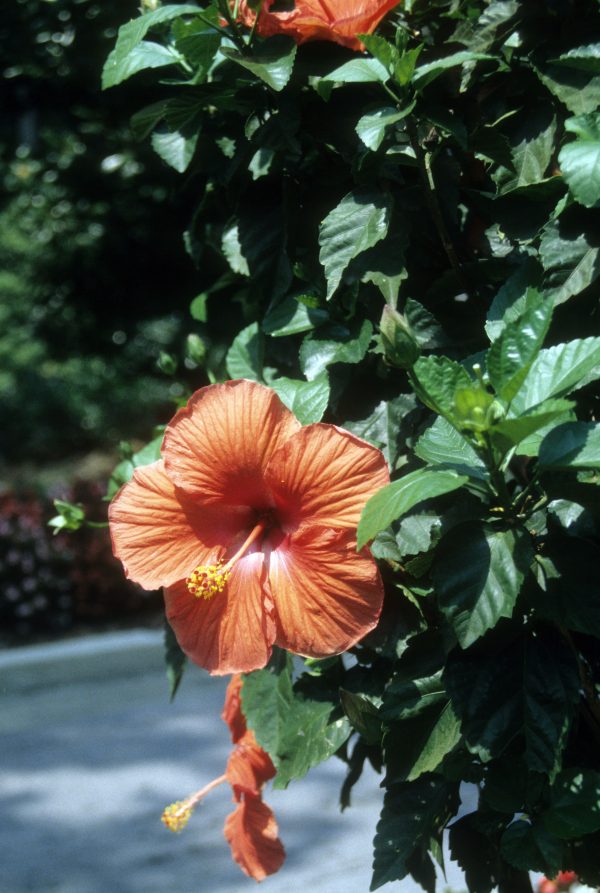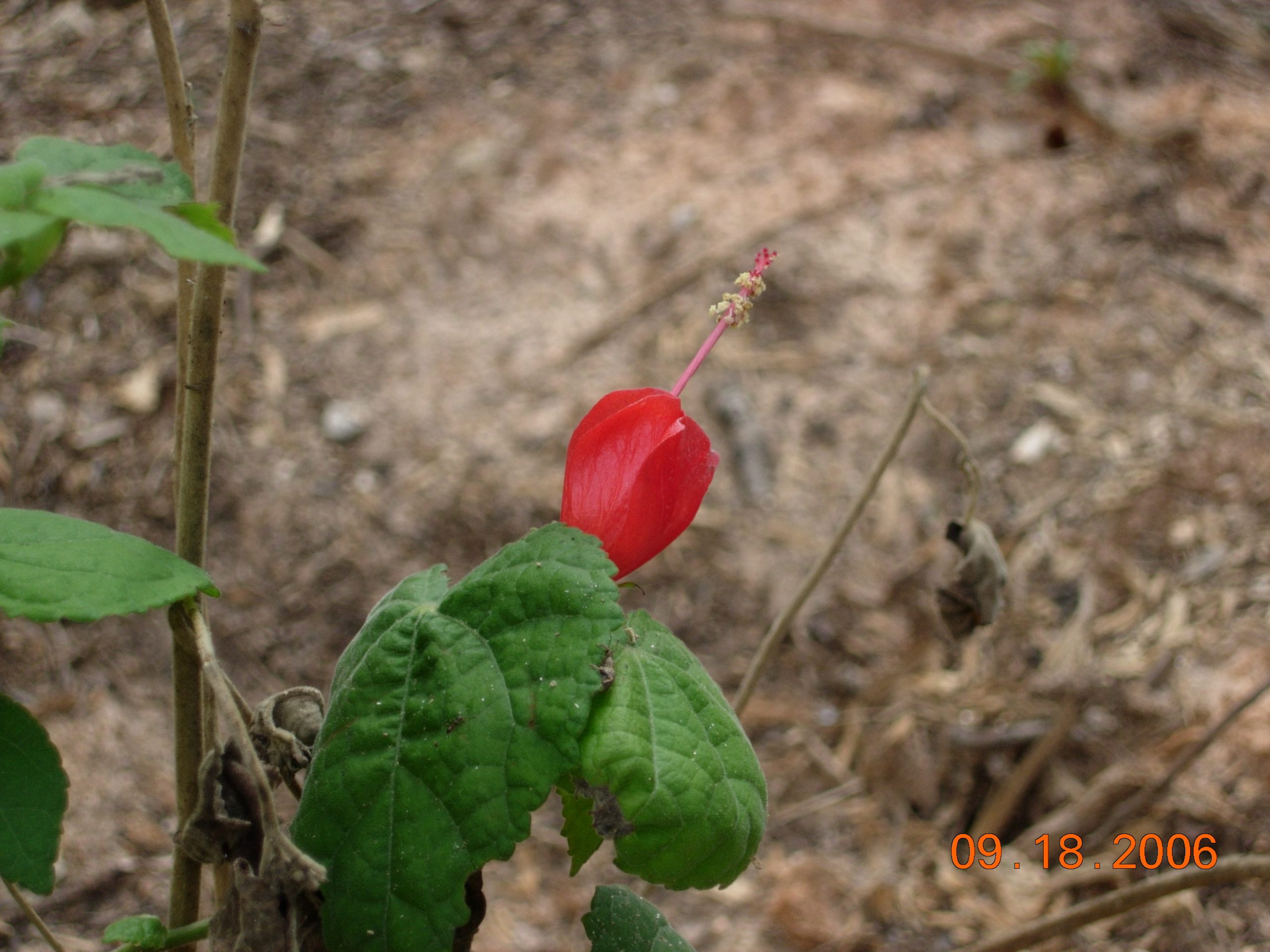Hibiscus – Identification

Each year I receive several questions regarding hibiscus. Tropical hibiscus owners want to know how to bring their plants indoors for the winter and have many concerns about keeping them healthy. Confederate rose growers want to know how to root cuttings they can share with friends. Rose of Sharon fanciers need assurance that their prolifically blooming plants will survive the winter outdoors.
The hibiscus genus is fascinatingly wide and contains many beautiful and useful plants. It’s a member of the Malvaceae family, which contains many other beneficial hibiscus kin. What other plant family could you wear, eat, admire and read from in a single day?
The malva family includes cotton (Gossypium hirsutum) from which the jeans I wear nearly every day are made. If I choose to have lunch at Matthews Cafeteria in Tucker, I’m sure they will be serving tasty fried okra (Abelmoschus esculentus).
My summer landscape includes Rose of Sharon (Hibiscus syriacus), tropical hibiscus (H. rosa-sinensis) and scarlet hibiscus (H. coccineum). A regular morning route takes me past a big clump of swamp mallow (H. moscheutos) and a gorgeous Confederate rose (H. mutabilis) on Scott Boulevard. Some of my reading material later in the day might be printed on paper containing the fiber-substitute kenaf (H. canabinus).
My fascination with the malva family aside, here are answers for those who haven’t yet mastered the intricacies of hibiscus care.
BRINGING TROPICAL HIBISCUS INDOORS If your hibiscus has flowers that are red, orange or yellow and which also have very elongated stamens in the center of the flower, it is likely a tropical hibiscus. It will not survive winter outdoors in Atlanta. If it is a large plant, you can trim it back by one fourth, to help it fit your available quarters, without harm. Place it in as much light as possible and water only enough to keep the soil damp. It may drop more leaves during the winter but when April rolls around, you can put it back on your patio and it will quickly regain its foliage. Remember to trim it in September next year to make it more attractive when it again comes inside for cold weather.
ROOTING CONFEDERATE ROSE It’s easy to root cuttings from almost all hibiscus but Confederate rose is even easier than most. Simply cut twelve inch stem lengths, strip off all but the top two leaves and stand the cuttings in a quart jar filled with water. Put the jar in a sunny kitchen window. Within a few weeks you’ll notice fine white roots forming underwater. When they are two inches long, plant each cutting in a six inch pot filled with potting soil. Care for it as a houseplant until April, when you can surprise and delight your friends with your horticultural generosity.
HARDY HIBISCUS Though tropical hibiscus is frost tender and Confederate rose is sometimes killed by severe winter cold, Rose of Sharon is completely hardy in Georgia. Swamp mallow and scarlet hibiscus are also winter hardy. Some gardeners complain that Rose of Sharon is too hardy since wayward seeds can quickly form a thicket around your original plant. Plant breeders have introduced a trio of improved Rose of Sharon cultivars, ‘Diana’, ‘Aphrodite’ and ‘Minerva’ whose good behavior and beauty are definitely not mythical.
There are dozens of other members of the malva family. I haven’t mentioned my lantern-flowered abutilon or the hollyhocks down the street that self-seed every year….. or the flattened, fasciated Lavatera I saw at Callaway Gardens this summer. In any case, whether you wear, eat or admire them, members of the extended hibiscus family comprise an extremely versatile plant household.

Scarlet Hibiscus

tropical hibiscus

swamp hibiscus

Rose of Sharon hibiscus

Confederate rose hibiscus














